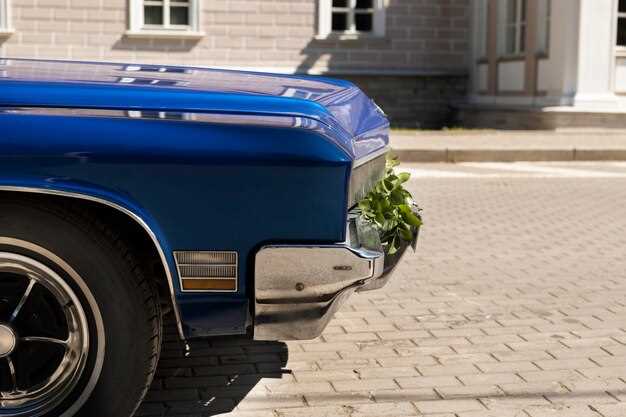
The Ford Mustang, a symbol of American automotive culture, has been captivating hearts and minds since its inception in 1964. As we celebrate 60 years of this iconic vehicle, it is essential to reflect on the profound impact it has had on the automotive industry and car enthusiasts alike. The Mustang has transcended its role as merely a car; it has become a cultural icon representing freedom, performance, and the spirit of adventure.
Over the decades, the Mustang has evolved through various design changes and technological advancements, yet it has always remained true to its roots. With its powerful engine options and sleek styling, it embodies the essence of what a muscle car should be. Each generation of Mustangs has brought unique innovations while preserving the core characteristics that make it stand out in a crowded market.
In celebrating this remarkable legacy, we also honor the community that surrounds the Mustang. From car shows to online forums, the Mustang has fostered a passionate following that spans generations. This article will delve into the milestones of the Ford Mustang, showcasing its journey through time and its unwavering commitment to power and performance. Join us as we explore the enduring legacy of the Mustang and what the future holds for this legendary vehicle.
Key Milestones in Mustang’s Evolution

The Ford Mustang has a rich history marked by several key milestones that have defined its identity and impact on the automotive industry. Launched in 1964, the first-generation Mustang quickly gained popularity for its stylish design and affordability, becoming a symbol of American muscle.
By 1966, Ford introduced the Mustang convertible, further increasing its appeal and solidifying its status as an icon of freedom and rebellion. The introduction of the GT model in 1965 added performance features, enhancing the driving experience and attracting enthusiasts.
In 1974, the Mustang entered its second generation, evolving its design and dimensions to adapt to changing consumer preferences. This era marked the transition towards a more fuel-efficient vehicle in response to the oil crisis, showcasing Ford’s ability to innovate.
The reintroduction of the Mustang in 2005 with a retro-inspired design paid homage to its roots while incorporating modern technology. This new generation reignited enthusiasm among fans and attracted a new generation of drivers.
In 2015, the Mustang celebrated its 50th anniversary, making history as the first American sports car to be sold globally. This milestone underscored its lasting legacy and international appeal, paving the way for continued success.
The latest iteration, launched in 2023, combines advanced performance with cutting-edge technology, reaffirming the Mustang’s position as a pioneer in the muscle car segment. Each milestone in its history showcases Ford’s commitment to innovation while honoring the spirit of the original design.
Performance Innovations That Defined the Mustang

Over the decades, the Ford Mustang has continually set the benchmark for performance innovations in the automotive world. From its inception in 1964, the Mustang was designed to be not only stylish but also powerful, giving rise to a new class of American muscle cars.
One of the earliest innovations was the introduction of multiple engine options, allowing drivers to choose their desired balance of power and efficiency. The 289 cubic inch V8 engine provided exhilarating performance, establishing the Mustang as a formidable competitor on both the street and the racetrack.
The implementation of the suspension system in the early models, particularly the use of a front coil spring and rear leaf spring setup, contributed to a unique driving experience that combined stability with agility. This engineering choice enhanced handling and responsiveness, crucial for both everyday driving and spirited performance.
As the Mustang evolved, so did its technology. The addition of fuel injection in later models marked a significant shift towards efficiency and power delivery. This change not only improved horsepower but also contributed to better fuel economy, appealing to a broader audience without compromising performance.
The launch of the Mustang GT in the late 1980s introduced performance refinements, including enhanced brakes, wider tires, and a more potent engine, solidifying the Mustang’s status as a true muscle car. These innovations catered to performance enthusiasts, ensuring that the Mustang remained relevant in an ever-changing automotive landscape.
In recent years, the Mustang has embraced modern technology with features like adaptive cruise control, launch control, and a sophisticated digital dashboard. These innovations modernize the driving experience while maintaining the raw, visceral feel that enthusiasts crave.
The Mustang’s continuous commitment to performance innovation has not only defined its legacy but also shaped the muscle car segment as a whole. Each generation builds upon the last, ensuring that the Mustang remains a powerful symbol of American automotive excellence.
Community Impact and Cultural Significance of the Mustang
The Ford Mustang has transcended its identity as a mere automobile, evolving into a cultural icon that embodies freedom and adventure. Its history is rich with moments that have resonated deeply within communities across the globe. Since its debut in 1964, the Mustang has not only influenced automotive design but has also significantly impacted popular culture, from music to cinema, fostering a sense of belonging among enthusiasts.
The Mustang’s role in community identity can be seen through numerous car clubs and events that celebrate this legendary vehicle. These gatherings often forge lifelong friendships and connections among owners who share a passion for the Mustang’s distinct style and performance. Local car shows and cruising events serve as platforms for owners to showcase their vehicles, sharing stories and experiences that highlight the Mustang’s enduring legacy.
Culturally, the Mustang represents an era of American muscle cars, symbolizing power and rebellion during the 1960s and 1970s. Movies such as “Bullitt” and “Gone in 60 Seconds” have immortalized the Mustang, embedding it in the fabric of American cinema. This representation has nurtured a lasting admiration for the car, allowing it to remain relevant across generations.



